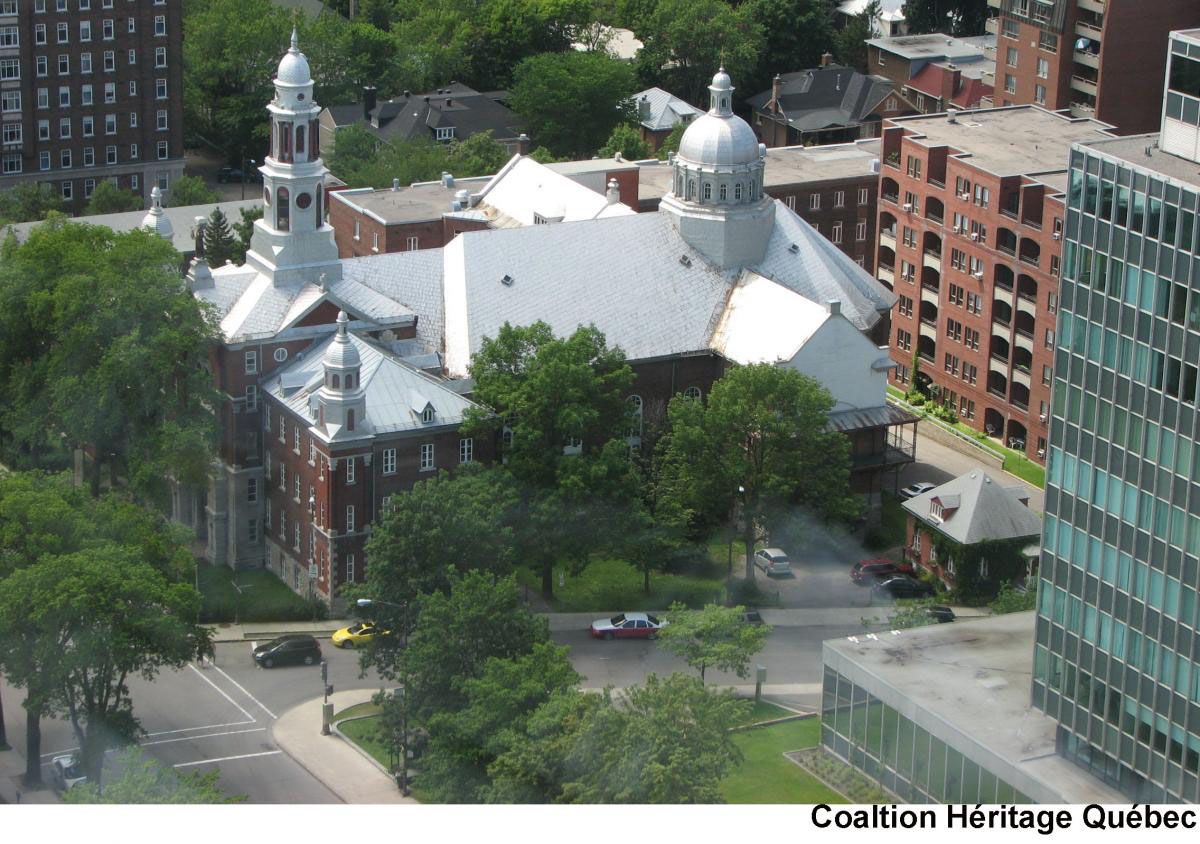
Franciscan Sisters Missionaries of Mary Monastery and Chapel
388 Grande-Allée East, Quebec City—PRAYING FOR A MIRACLE
A demolition permit has been issued to tear down the monastery and its 124-year-old chapel on one of Quebec City’s most prestigious and historic streets in favour of a planned condo development.
 Why it matters
Why it matters
The Franciscan Sisters Missionaries of Mary arrived in Quebec in 1892, quickly establishing themselves on a substantial lot along the Grande-Allée. A monastery designed by Eugène Étienne Taché, architect of the Parliament of Quebec, was under way by 1896, beginning with the chapel.
The chapel’s ambitious interior was designed by renowned wood carver and architect François-Xavier Berlinguet who, with his partner René-Pamphile LeMay, worked extensively throughout Quebec and the Maritimes. The lavish features include beautiful wood carvings, coloured Italian marble columns, decorated balconies and the distinctive fenestrated dome.
Why it’s endangered
The Franciscan Sisters sold the property to the City in 1986 who then converted the monastery into a seniors’ residence, Habitations Grande-Allée, before selling to a private businessman in 2005. The chapel, abandoned since 1987, is in an advanced state of disrepair.
With the demolition permit already issued by the City, the magnificent chapel is in imminent danger of being torn down to allow for the construction of two seven-storey condo towers for seniors. For the monastery, the plan is to try to retain only the front façade and its bell tower.
The Quebec Minister of Culture and Communications has declined recommending designation on the basis that the building’s 1986 evaluation determined a lack of heritage significance. According to the development project’s design team, the chapel’s only architectural value resides in the interior plaster ornamental features that have been severely damaged by water infiltration.
Conversely, the Coalition Héritage Québec is of the opinion that there is much more at stake and is calling for the building’s protection. Berlinguet and LeMay’s work inside the chapel is described in the Dictionary of Canadian Biography as “the finest example of neo-baroque décor in Quebec.”
Where things stand
The chapel has been the focus of letters to elected officials, petitions, rallies and numerous media campaigns in favour of its protection. More than one hundred people braved the cold in November 2008 for a candle-light vigil to protest against the loss of this irreplaceable gem.
Anne Guérette, president of Coalition Héritage Québec, is calling for the City and the Province to reconsider the decision and to give the public the opportunity to be consulted on the site’s future.
The Coalition applauds dynamic new urban development and understands the growing need for senior residences. “However, this new project can be completed without the demolition of this jewel,” notes Mme Guérette. The group suggests that the rehabilitation of the historic landmark and the construction of a fourteen-storey tower—with a setback from the street—could be an alternative to demolition.
Without quick intervention, a prominent example of Quebec’s religious and cultural heritage will be lost forever.
Top 10 Endangered Places
- Explore Past Listings
- National
- British Columbia
- Alberta
- Saskatchewan
- Manitoba
- Ontario
- Quebec
- Bens
- Cap-des-Rosier Lighthouse National Historic Site
- Cathédrale Saint-Germain
- Estate of the Pères de Sainte-Croix
- Franciscan
- Grenville Canal
- Louis Hippolyte
- Québec - Redpath Mansion
- Saint-Vincent-de-Paul Penitentiary
- Southwest
- Très-Saint-Nom-de-Jésus
- Ville Marie
- Wallingford-Back Mine
- Winter Street Prison
- Wright Scott
- Sillery District
- Hôpital de la Miséricorde
- The Quebec Bridge
- New Brunswick
- Nova Scotia
- Prince Edward Island
- Newfoundland and Labrador
- Territories
- Worst Losses Archive
- Nominate a Site
